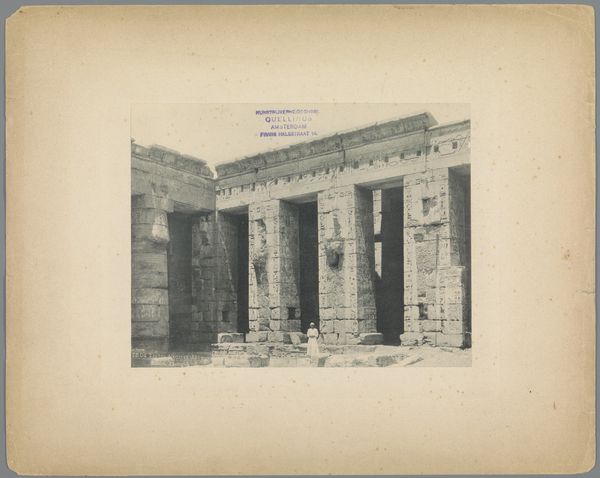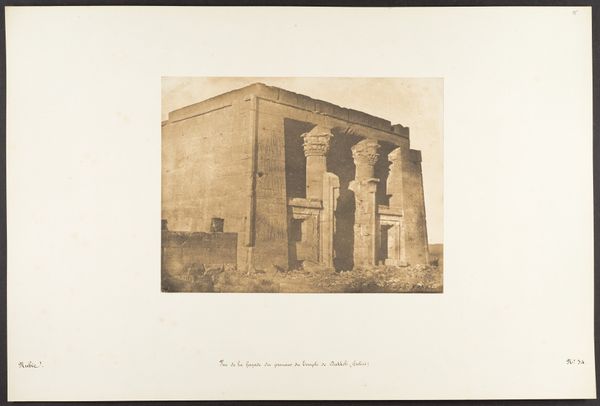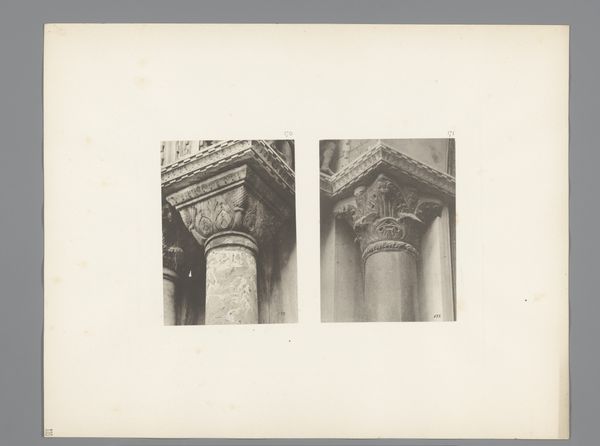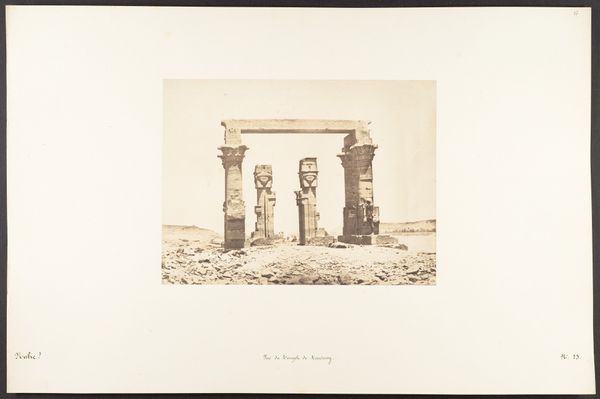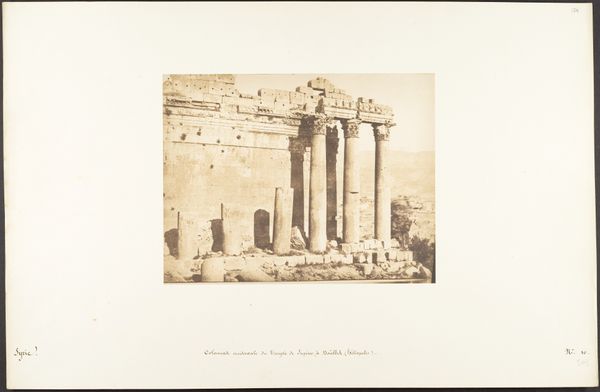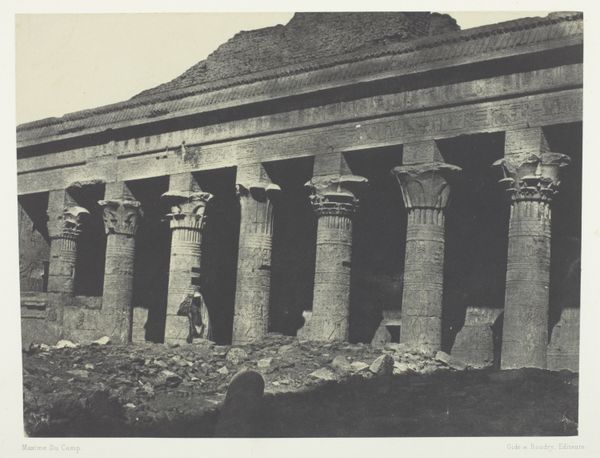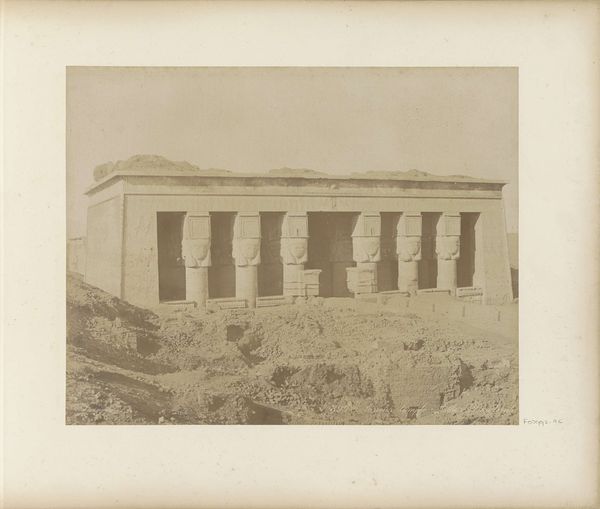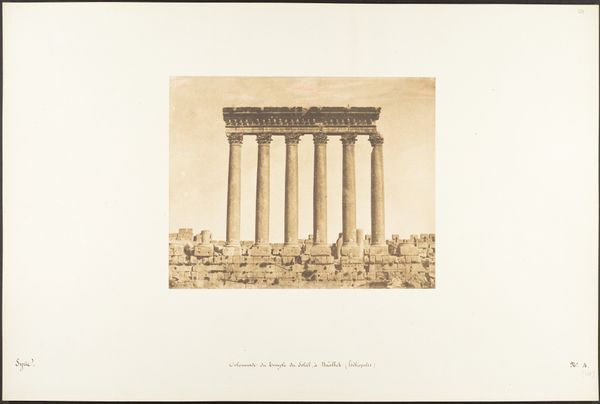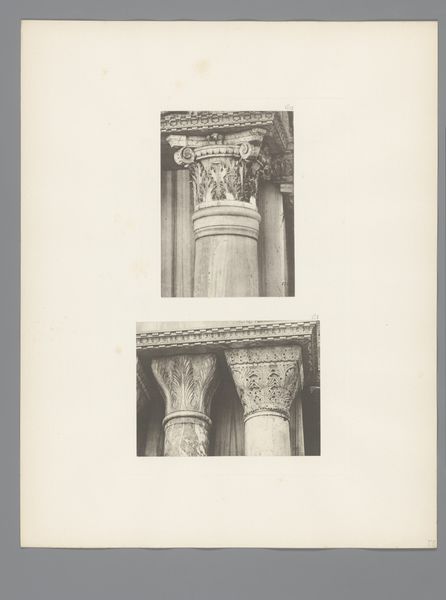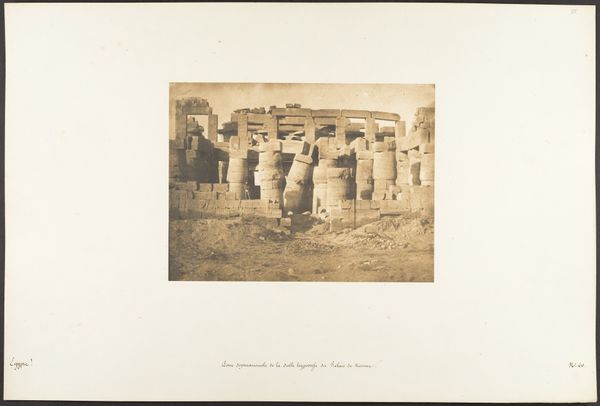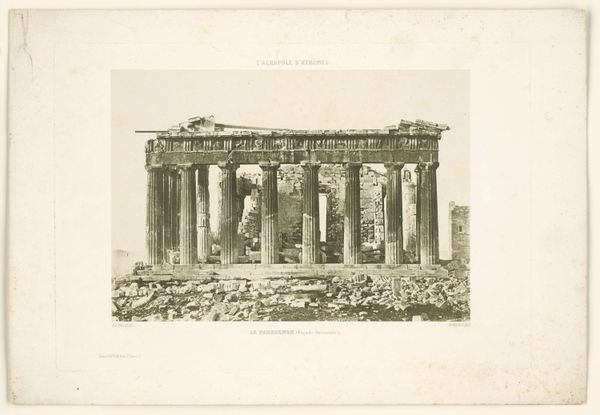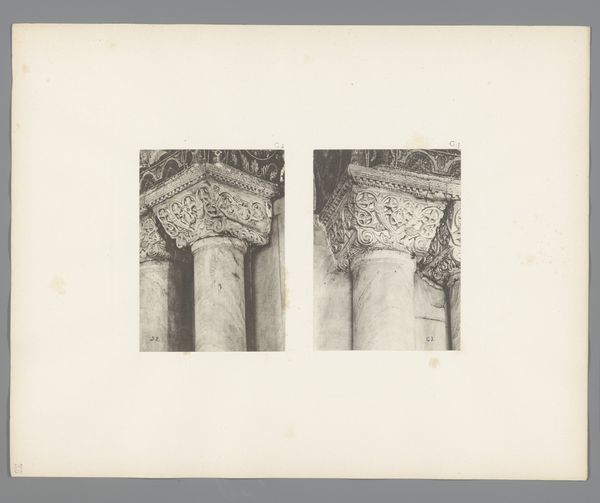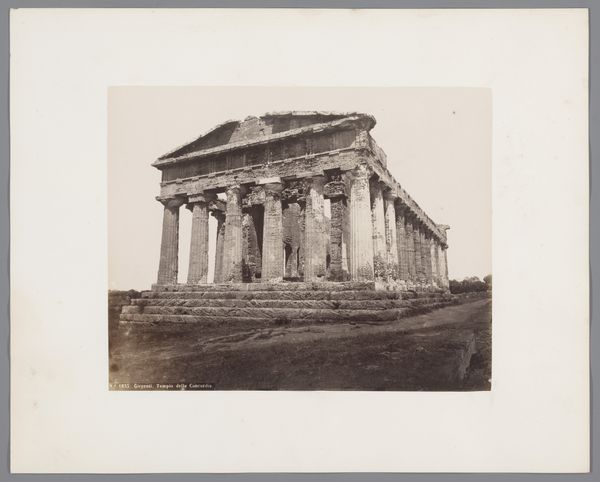
Colonnade latérale de la cour du Temple d'Isis, à Philae 1850
0:00
0:00
photography, albumen-print, architecture
#
landscape
#
ancient-egyptian-art
#
photography
#
ancient-mediterranean
#
column
#
albumen-print
#
architecture
Dimensions: Image: 6 5/8 × 8 13/16 in. (16.8 × 22.4 cm) Mount: 12 5/16 × 18 11/16 in. (31.2 × 47.5 cm)
Copyright: Public Domain
Curator: The image before us, titled "Colonnade latérale de la cour du Temple d'Isis, à Philae," is an albumen print taken in 1850 by Maxime Du Camp. It's currently housed at the Metropolitan Museum of Art. Editor: Immediately, I'm struck by the play of light and shadow across the columns. There’s a kind of haunting, geometric quality that almost overshadows the sense of place. The albumen print's sepia tones soften the decay, making the architecture almost dreamlike. Curator: This photograph serves as a historical document and visual poem. The Temple of Isis held deep symbolic significance; it was the heart of the cult of Isis, a powerful symbol of feminine divinity, healing, and resurrection. Notice how Du Camp positioned the camera. It suggests the sacred enclosure invites ritual procession. Editor: Yes, the repeated verticality of the columns, capped with stylized botanical forms, does create a rhythm. This repetition, contrasted with the rough texture of the ruins in the foreground, establishes a dialogue between order and chaos. Did Du Camp choose this angle to highlight that contrast intentionally? Curator: Very possibly. During that period, capturing Egyptian monuments was about more than just documentation. There was an urge to capture a cultural narrative: The grandeur of a vanished civilization against the encroachment of time and shifting empires. Isis was syncretized into the Greco-Roman pantheon. Its temple represents the continuous layering of meaning and identity across cultures. Editor: The presence of a lone figure between the columns, slightly out of focus, reinforces this tension. Is he an intentional element, an observer situated within the ruins, or merely incidental? It adds a layer of ambiguity to the photograph’s semiotic function, complicating the relationship between viewer and subject. Curator: Indeed. The human figure could signify the act of "discovering" ancient wonder, or maybe even underscore how impermanent people are when measured against something built of stone to seemingly last forever. I wonder what Du Camp would have felt, knowing the Temple was moved entirely later on. Editor: Perhaps he would appreciate the preservation, though lament the changed context. For me, the strength lies in his photographic interpretation of its decaying beauty, and this specific interplay of tonal balance, texture and geometric forms within his frame.
Comments
No comments
Be the first to comment and join the conversation on the ultimate creative platform.
